I am a professional wedding photographer and I end up editing thousands of images for my clients. While there are lots of wedding photographers who outsource their post-processing to free up their time, I am a believer in editing my own photos. In order to make my job easier, I tend to look for shortcuts and tools in Lightroom itself, which I use extensively. I’d rather do everything in one program than switch back and forth between Lightroom and Photoshop. You do not have to be a wedding photographer in order to take advantage of these tools in Lightroom. You can use these techniques wherever they are applicable. Below are some of the tools you may not be using to edit your photos.
Table of Contents
1. Straightening Tool – Perspective Correction
2. HSL Panel (Hue, Saturation, Luminance) – Targeted Adjustment Tool
3. Spot Removal Tool
4. Adjustment Brush for Brightening, Burning or Manipulating Color
5. Graduated Filter
1) Straightening Tool – Perspective Correction
There will be times when you come back with photos that have a tilted horizon, making the composition look awkward. Perhaps you held the camera wrong or simply did not pay attention to framing at the time of taking the picture. Either way, you can fix this issue in Lightroom by using the straightening tool, which is located under the Histogram and looks like a perforated rectangle. Or you can simply press the “R” button on your keyboard to activate the Crop Overlay Menu in the Develop Mode. When you activate the Crop Overlay, the image you are working on will be framed with a cropped edge. While you can hold the corners of the photo and twist and turn it as much as you want, fixing the horizon can be much more calculated and easier than that.

Check the Straighten Tool and draw a line against a linear surface in the photo. The longer and the straighter the line is, the easier it will be to level it. In the example photo below, I didn’t have a distinctive line to help me determine where to exactly draw the line. So, I used their shoe line as a deciding factor. This worked out quite well in this instance and I pressed enter to accept the changes. One thing to keep in mind while using this tool is that it might clip quite a bit from the edge of the photo, making the shot look a little tight. If you have tight shots to fix, you may need to be a little more careful while using this tool.

2) HSL Panel (Hue, Saturation, Luminance) – Targeted Adjustment Tool
Targeted Adjustment Tool was a much welcomed find for me. It lets Lightroom determine the HSL for you, while you are free to follow the changes and stop when your artistic vision deems enough was done. I use this tool quite a bit since all of my color correction of photos and additional elements like skin color is changed in Lightroom. While this tool may not be ideal for high-end fashion retouching, this tool will give a lot of flexibility for wedding, family and landscape photographers without resorting to Photoshop.
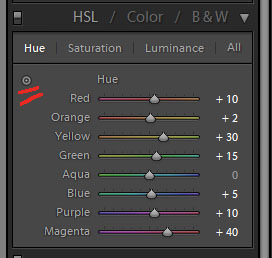
To activate the droplet all you have to do is click on it and touch anywhere in the photo that you want to make selective changes on. In this particular photo, I decided to bring out the color of the sky and add a little blue just to the spot I thought needed a boost. You simply drag up the tool to increase the HSL and drag down to decrease in order to mute the particular color of your choice. Keep in mind that the Targeted Adjustment Tool needs to be on the area where the changes are expected to take place.
Aside from using a regular white balance tool to fix skin colors, you can utilize the Targeted Adjustment Tool to do the job. I have to warn you though, the changes will affect other areas of the color you are manipulating, if it is prominent in other parts of the photo. So, don’t overdo it.
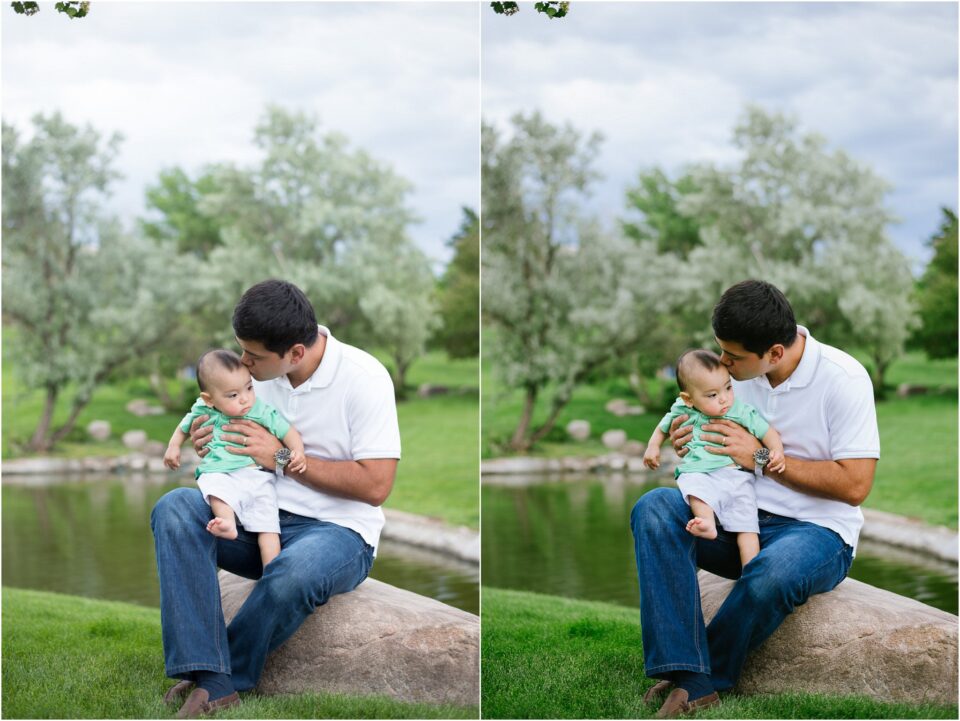
NIKON Df + 50mm f/1.8 @ 50mm, ISO 100, 1/320, f/2.5
3) Spot Removal Tool
Spot Removal is another splendid tool that you can use to your advantage. This tool has come a long way from being limited to only a circular shape to a function similar to the Healing Brush in Photoshop. Though it is not as flexible as the one in Photoshop. Its limitations aside, here is what you can do with it.
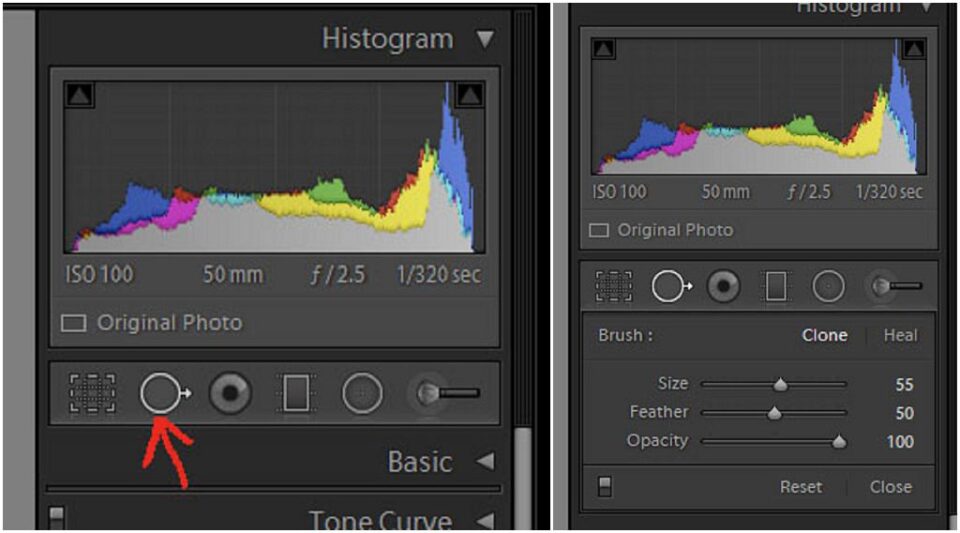
You can either choose the Spot Removal Brush by clicking on the icon or you can simply press the “Q” key to activate the menu. There, you will come across two functions for removing spots: Clone and Heal. Basically, this tool is used to replace your target area with the sample area of your choice. If you are familiar with Photoshop, Clone is an identical twin of the Healing Brush in Replace Mode. I do not use it very often, unless I have a distinct task for it. But I use the Healing tool quite a bit, and in functionality, it resembles the Healing Brush tool in Photoshop. It creates a much softer and feathered texture to blend well with the rest of the pixels in the photo.
In the below photo, I found the tree leaves in the upper left corner to be distracting and I certainly did not want to include them as part of the original image. Here is how I was able to use the Spot Removal Brush to get rid of them:

And here is a before and after:

NIKON Df + 50mm f/1.8 @ 50mm, ISO 100, 1/320, f/2.5
You can use this tool to remove stray hair, minor imperfections, and distracting objects that are not too complicated to remove and are not against a very busy backdrop. I use it quite a bit to remove blemishes and dust spots in photos. Keep in mind that this tool is not ideal if you have a larger area to work with.
Simply draw over the area that needs attention and instantaneously see the tool heal out the area and show you where the sample pixels came from. You can move the sample area and manipulate the tool to your liking. See the areas that are being picked up with the spot healing tool while working on a portrait retouching.
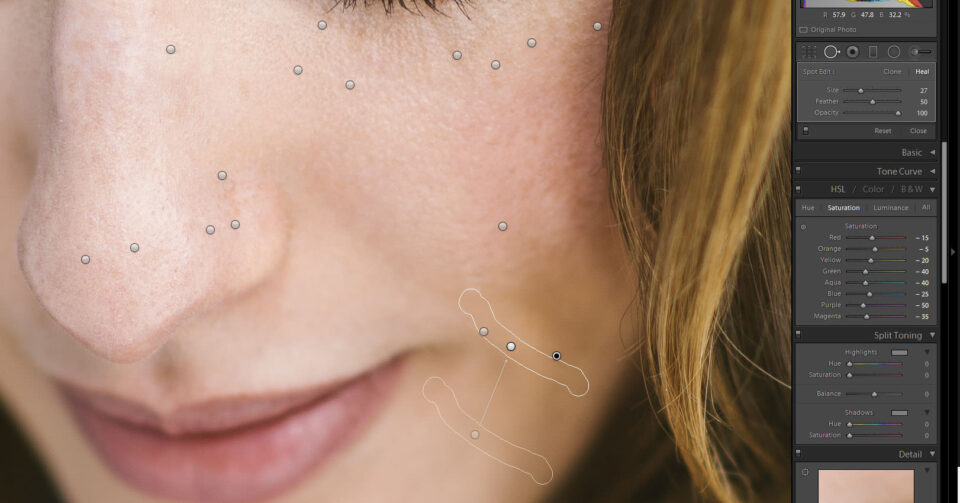
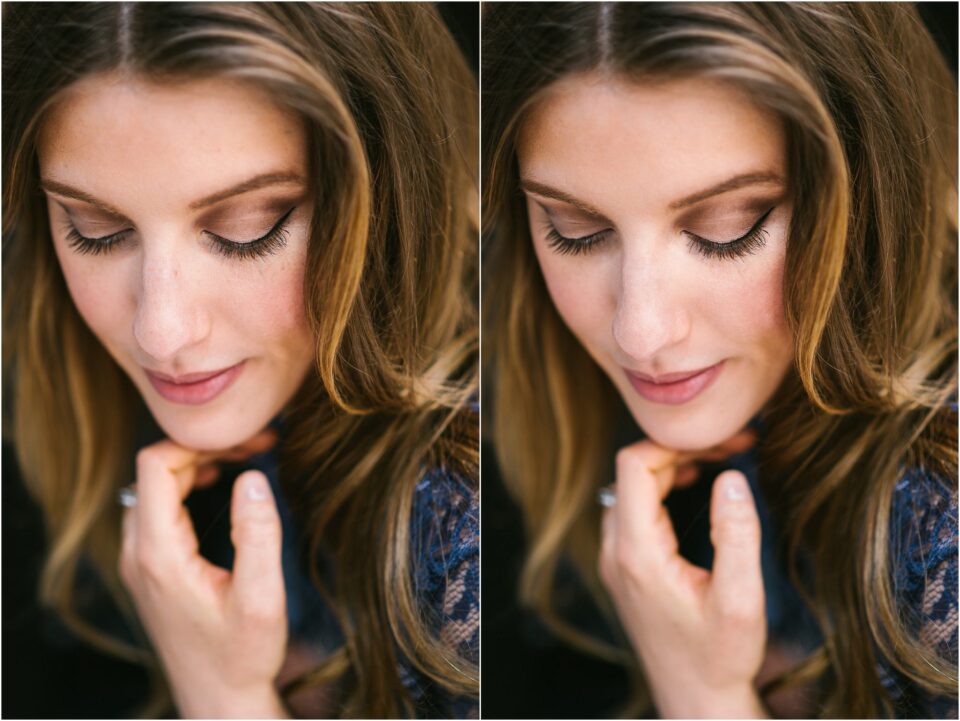
NIKON Df + 85mm f/1.8 @ 85mm, ISO 100, 1/320, f/2.0
4) Adjustment Brush for Brightening, Burning or Manipulating Color
I use the Adjustment Brush quite a bit and it helps me with all sorts of things. I can bring out the shadows in particular areas of the photo, without effecting the shadows on the other parts of a photograph. I can selectively saturate colors that I want and sharpen the areas that I want without moving to Photoshop. Here are some examples of how you can toy with it.

Select the Adjustment Brush from the Menu or simply press the “K” key to bring out the Adjustment Brush Menu. Select the area of your interest by drawing on it. In this case, I decided to sharpen, brighten and intensify the color of the eyes.

You cannot make every single change with the same brush stroke. You may need to make several attempts to achieve the desired result.
Here is a little example of how you can change the color of the eyes:
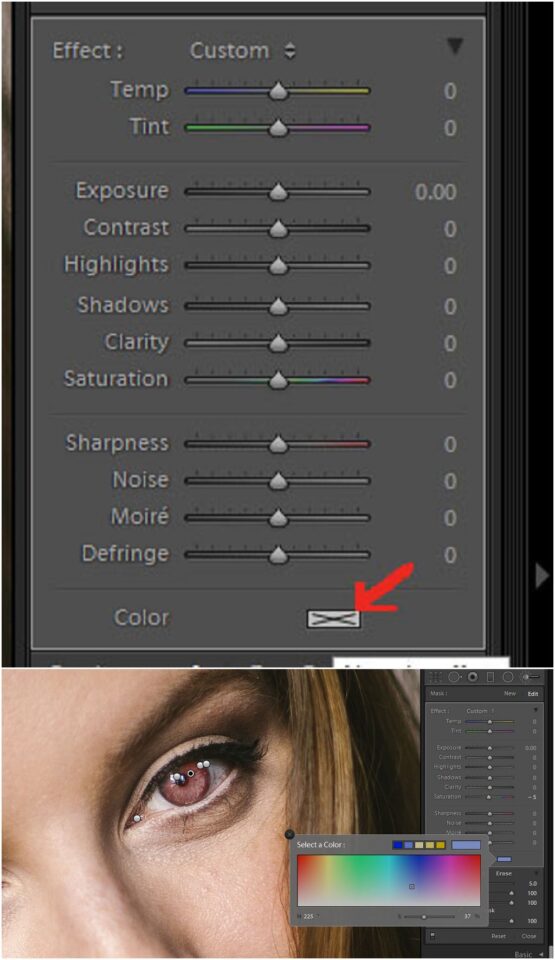
Select the area of interest by painting on it. Click on Color mode in the Menu box of the Adjustment Brush Tool. Select the color you desire and play with opacity and saturation until you have what you want. Press Enter to accept the changes.
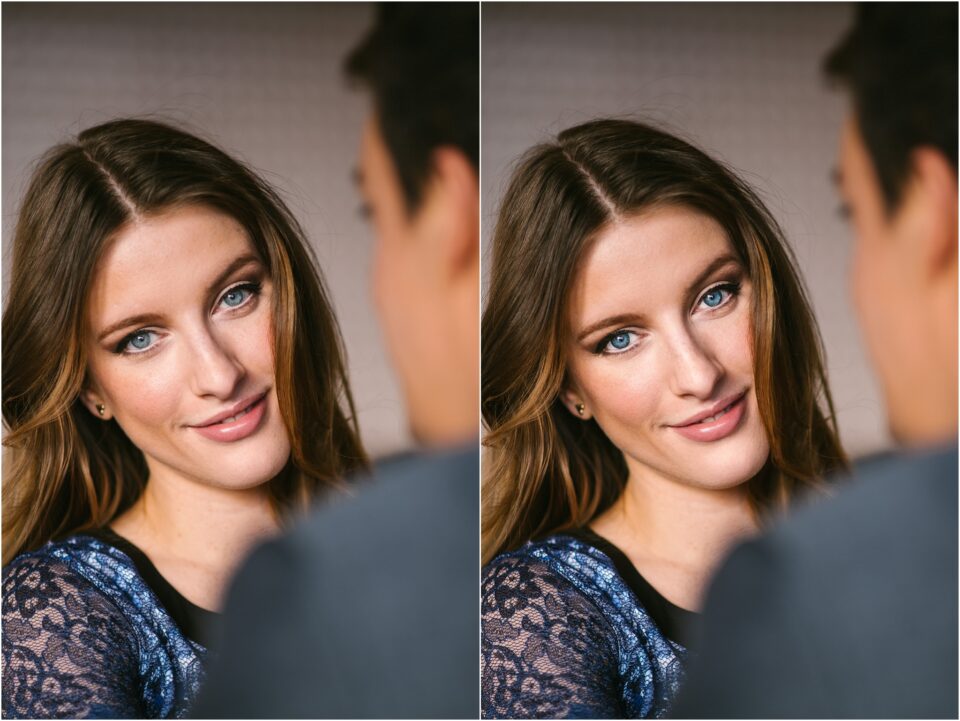
NIKON Df + 85mm f/1.8 @ 85mm, ISO 320, 1/200, f/1.8
5) Graduated Filter
Generally, the Gradient Tool is used to balance out or fix the exposure of a larger area that cannot be efficiently fixed by using the Adjustment Brush. But you can also use the Gradient Tool to add special mood to your photos. You can successfully emulate a colorful reflective surface that can happen when you shoot through certain objects.
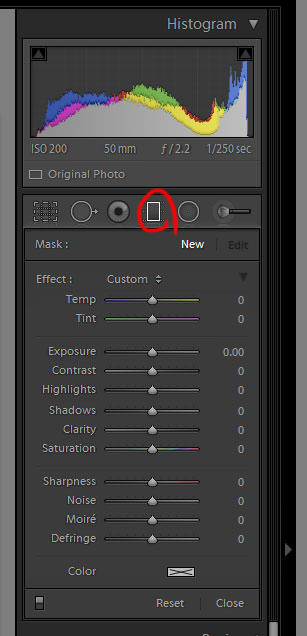
Below is an example of a planned shot, which in my opinion gives the photo a feel of summer and warmth. The photo was made shooting through a bush of yellow flowers.
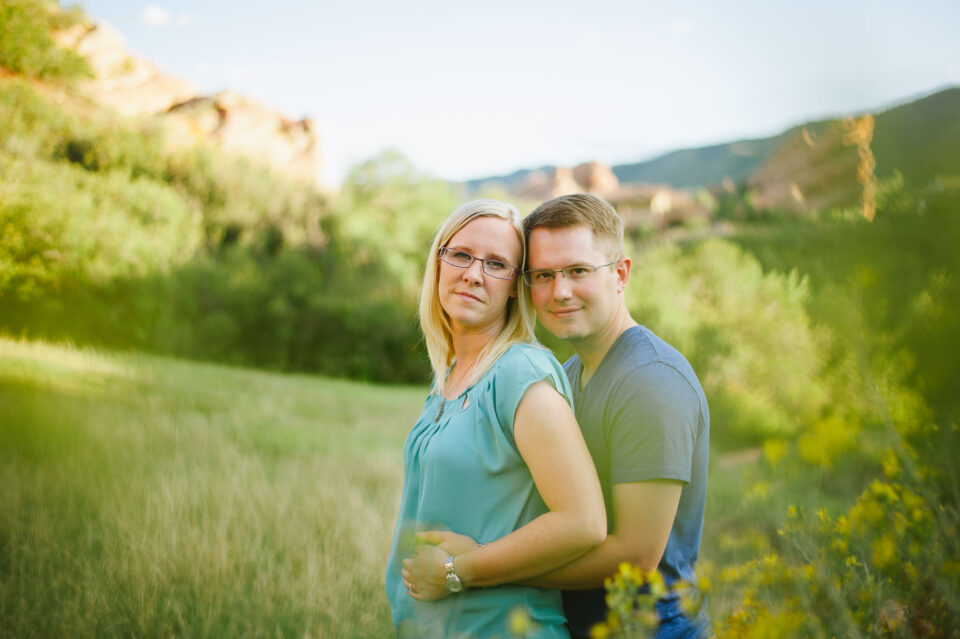
NIKON D3S + 50mm f/1.8 @ 50mm, ISO 200, 1/800, f/2.0
Below is an example of how you can create the same effect in Lightroom on a photo that has not been shot through anything. Click on the edge of the photo and drag down the graduated filter to the point where you like the effect it creates. Once the filter is in place, you can choose the color for the effect and use the sliders to change saturation and other effects.
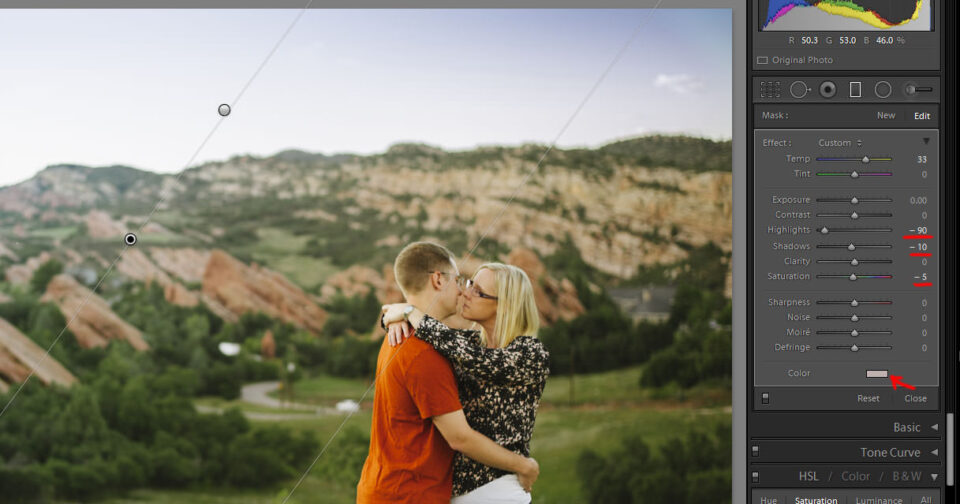
The good thing about the Graduated Filter, is that you can make changes to it anytime and the program will remember what you have applied before. So you can reuse the effect if you would like, or start over with new settings. In addition, you can still copy-paste any of the applied settings between different photos.

NIKON D3S + 50mm f/1.8 @ 50mm, ISO 200, 1/250, f/2.2
Here is another example of the creative use of Graduated Filter:
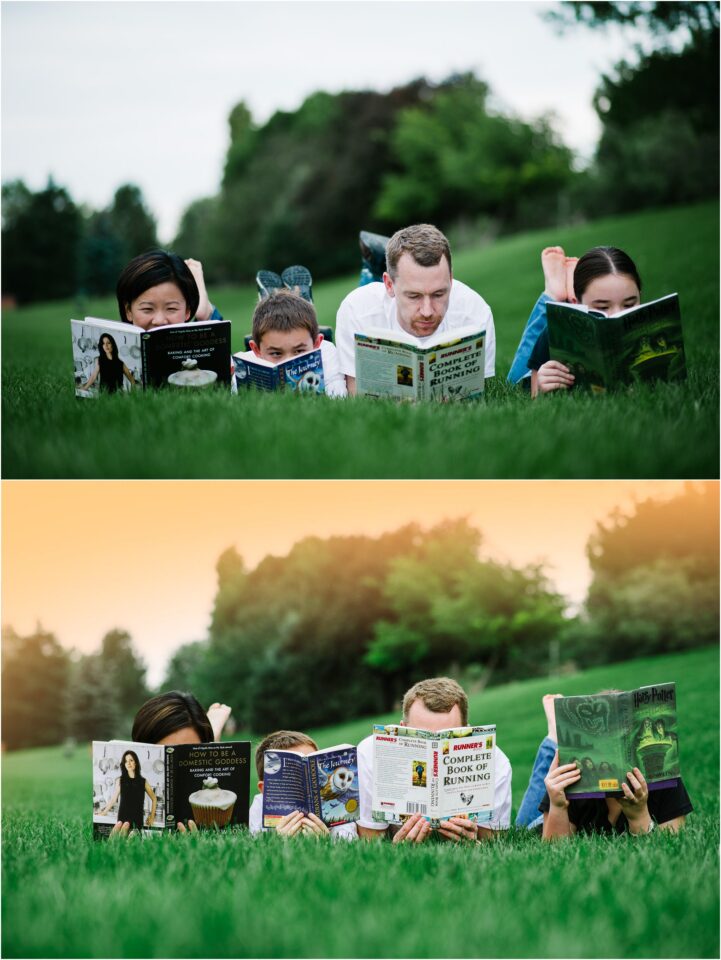
The above processes may not be as flexible as what you can achieve in Photoshop, but if you are dealing with a lot of photos and you need quick shortcuts, these tips will do wonders. You can use the above methods practically for any type of photography!
If you have any other tips to share with us, please feel free to leave feedback and recommendations below.
